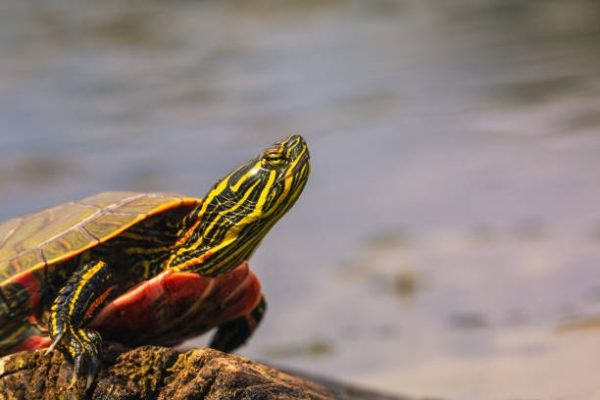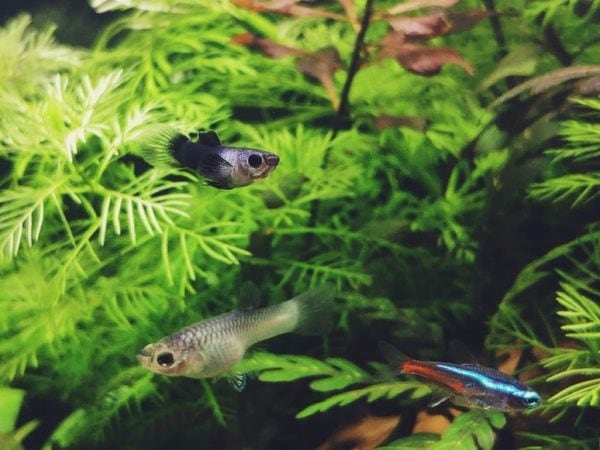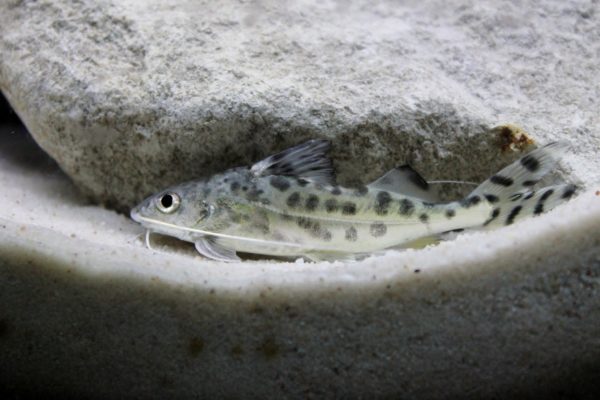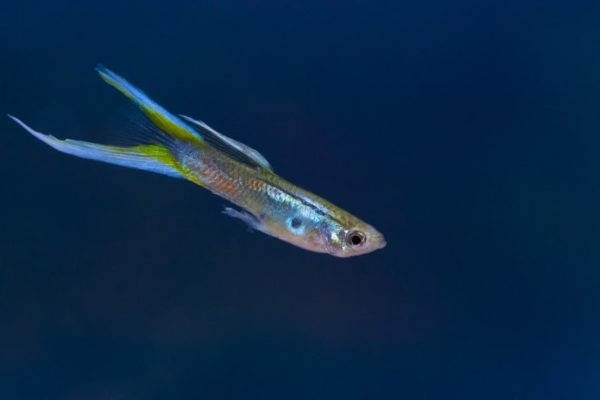Keeping fish and aquatic turtles at home can be fun, but can you keep them together? Can turtles and fish survive the same living environment? Well, this is a common question that almost all people ask.
It’s generally seen that turtles eat fish. So, how can fish and turtles live together? Well, with a little precaution, you can make these two species live together in harmony.
In case you are a beginner, or if you have not found compatible turtle and fish species, you should not try keeping them together. Also, you know the right way of taking care of a turtle and fish.
Table of Contents
Can Pet Turtles Live With Fish in the same Tank: Quick Answer
The simple answer to this question is YES. But that does not mean you can keep any kind of turtle and fish together. That’s because certain turtle species feed on fish.
So, if you want to keep turtles and fish in the same tank, make sure that the tank is big enough for their accommodation and the species are compatible.
Do Turtles Eat Fish?
You can make turtles and fish live together, but turtles eat fish. So, how will you protect the fish in the tank? Well, you need to check on a few things, have proper knowledge, and do some research to make fish and turtles live happily in an aquarium.
You can start by checking the filtration system, fish hiding places, fish species, turtle species, and the size of the tank. But you need to remember that only a few turtle species don’t eat fish. And these kinds of turtles can grow quite big, which you might not be able to take care of.
Types of Turtle Species to Keep in Tank
Turtles are mainly of three types, i.e., herbivorous, carnivorous, and omnivorous.
Here is a list of the most common pet turtles and their diet:
- Red-Eared Slider: Omnivorous
- Eastern Box Turtle: Omnivorous
- Painted Turtle: Omnivorous
- Map Turtles: Omnivorous
- Wood Turtle: Omnivorous
- Sideneck Turtle: Omnivorous
- Musk turtle: Omnivorous
- Mud Turtle: Omnivorous
- Yellow-Bellied Slider: Omnivorous
- Florida Cooter: Omnivorous
- Striped Mud Turtle: Omnivorous
When keeping turtles, remember that young turtles tend to feed on fish more than older ones. So even if young turtles have a balanced diet, they would try to chase fish in the aquarium. But older ones won’t go through the effort of chasing fish.
Here are common turtle species that you can consider keeping in your tank.
Red-eared slider

The first kind of pet turtle that immediately comes to mind is the red-eared slider. The younger version of this turtle species is pretty carnivorous, but the adults are herbivorous.
Male red-eared sliders can grow up to 9 inches, whereas females can grow up to 13 inches. Mostly, this turtle eats kale, collard greens, carrot tops, endive, dark romaine leaves, and swiss chard.
The adult version of this turtle species can live peacefully with larger fishes, and the smaller fish cannot feed on larger fishes. That means when you are keeping a red eared slider turtle in the tank, accompany it with bigger fish.
Western Painted Turtle

Another turtle you can consider keeping in your aquarium is a Western painted turtle. It can grow to a length of 10 inches.
If the fishes are as big as they are, they won’t hurt them. You can feed your Western Painted turtle so many things, including insects, small fish, dark leafy vegetables, earthworms, commercial turtle pellets, crickets, and mealworms.
Pink Belly Sideneck Turtle

This one is another easy-to-adjust- turtle species that you can consider keeping. These can grow up to 10 inches, and they generally feed on insects, plant matter, mollusks, small fish, and crustaceans.
If you are keeping a Pink Belly Sideneck turtle in the aquarium, try accompanying it with larger-size fish.
Mud and Musk Turtles

Among all the pet turtles, Mud and Musk Turtles are the first choice of people because this species is not good to hunt fish. That’s because they are almost always uninterested in chasing fish.
When selecting a turtle, you need to understand whether it can live in tap water or not?
Types of Fish Species to Keep
Just as certain turtles can be harmful to fish, a few kinds of fish are not good for turtles either. Although these fishes are not poisonous, they have sharp bones that quickly damage pet turtles’ internal organs.
Here is a list of fish that you should avoid:
- Goldfish
- Rosy Red minnows
- Carp
- Gizzard Shad
- Feathered minnows
Since turtles swallow the fish instead of chewing, the sharp bones of the fishes mentioned above can injure them. And sometimes, the internal bleeding caused by spiney bones can become deadly.
Another issue with some of these fishes is that they contain thiamine, which can block the absorption of vitamin B1 when consumed.
Instead of the dangerous fish, you can consider keeping the ones that are safe for turtles to eat and live with. Like
- Bluegills
- Neon Tetra
- Bass
- Crappies
- Pictus Catfish
- Guppies
- Killifish
- Platies
These fish are safe because they don’t have sharp bones. Also, they don’t contain thiamine. That means your turtle would no longer be in danger if kept with these fish.
Neon Tetra

This fish species is popular among most turtles because it doesn’t grow too much. It can reach somewhere between 1.5 inches. However, despite their small size, one thing that works in their favor is speed.
The quick speed of Neon Tetra fish makes it impossible for turtles to reach near them. Also, these fish species live in groups of at least four, which further increases their chance of surviving.
Pictus Catfish

Another common fish species is Pictus Catfish that has whiskers, which lets them sense danger. However, these fishes won’t grow larger than 5 inches. While this size does not intimidate a turtle, it surely doesn’t encourage them to attack either.
Besides whiskers, the fast speed of this fish species makes them a suitable choice for living in a tank with a turtle.
Guppies

This adorable fish is another species that a turtle can safely share its tank with. Guppies generally grow up to 2.5 inches and come in different colors. While they are small, they are extremely fast and don’t let any turtle catch them.
Killerfish
Although Killerfish are small, they are fast. Also, their small sizes help them easily fit into spots that are hard to reach by turtles. Thus, they are safe.
Determining Factors for Housing Fish and Turtles
Making a turtle and fish live together is not easy. For this, you need to pick the right tank turtle species. Then, depending on the size of the tank, you can pick a turtle. After that, you can choose an appropriate tank filter.
Similarly, for fish, you need to pick a species. After that, depending on the turtle you have selected, you can choose a fish that will be most compatible with it. Another thing to consider is the size of fish, its food habits, and requirements.
How to Keep Turtles and Fish in the Same Tank?
Keeping turtles and fish in the same tank is impossible, but you can do it with some tips and information. Here’s a quick guide.
Have Enough Space
The major reason why a fish and turtle cannot survive in the same living environment is that the space is limited. Thus, there remains no room for fish to hide when turtles are chasing them.
It’s a general rule that every inch of a turtle’s shell needs around 10 gallons of water. And if you want to make turtles and fish live together, you need somewhere around 15 gallons of water.
For this much amount of water, you need proper space. Otherwise, the water can get dirty quickly.
Here’s an estimate for the right size of tank for turtles:
- Turtles up to six inches require 30 gallons of water
- Turtles up to eight inches require 55 to 60 gallons of water
- Turtles over eight inches require 70 to 130 gallons of water, depending on the exact size
Add Decorations For Fish To Hide
Another thing you can do to make fish and turtles live together is add tank decorations. You can see these decorations as hiding spots where fish can hide when turtles are chasing them.
When selecting decorations, try to pick one that has easy entry holes for fish. Also, the decorations must not break easily.
Here are some common items that are safe and ideal for turtle’s tank decorations.
- You can use objects made of PVC pipes and terracotta pots. Although these are not that decorative, they are very practical. For example, fishes can easily hide in them. If not this, you can also look for other kinds of items like sunken ships.
- Besides these, you can also add artificial plants to the tank. Plants will give a real-like appearance to the aquarium tank. You can either choose natural or synthetic plants.
- Another great hiding spot is the rocks and driftwood. They look beautiful and give a natural look to the tank.
Keep Your Turtles Well Feed
No matter what you do, if your turtles are not well fed, they will chase fish. So, it’s your responsibility to make sure that they don’t skip their meal.
For keeping the diet of your turtle under control, you can follow the head feeling rule. This way, your turtles won’t be overfed or underfed.
The easiest way to practice the head feeding rule is to pick a container about the same size as your turtle’s head. Then fill the container and feed your pet.
A well-feed turtle will not see a fish as its food. That means your fish won’t disappear overnight.
Don’t Keep Young Turtles In The Same Tank As Fish
If you know a thing or two about turtles, you would be aware that young turtles are more active than older turtles. So, if you keep fish in the same tank as the juvenile turtles, it would be like a death sentence for fish.
We are saying this because, despite the fast swimming fish, juvenile turtles are good at catching and eating fish. It’s seen that adult turtles are more herbivores. That means they prey more on vegetables than fish.
Also, different turtles mature at different ages. That means you should do your research before getting a turtle.
Understand Turtle’s Reaction to Fish
When putting a new fish in the tank, try to understand the turtle’s behavior towards it. For example, if the turtle leaves the fish and does not bother it, you can house it in the tank. But if the turtle bothers it, you would be required to look for a new house for fish.
Even after noticing unusual behavior, if you leave the fish in the tank, there is a chance that the turtle might hurt it.
Acclimatize the Fish to Water
If you want to keep fish and turtles together, you first need to acclimate fish to water. That’s because most of the time, fish can die due to failure to adjust.
For this, you can float the bag in which the fish came in inside the tank. After doing this for a while, you can add a few drops of tank water to the bag. This way, fish will start adjusting to the new water.
After some time, replace all the water in the bag with tank water. Let the fist stay in that water inside the bag. At last, introduce the fish to its new home. This way, fish can easily adapt to the tank water’s temperature and pH level.
Adjust pH Level and Temperature of Water
While turtles and fish have a defined temperature and pH level requirement, their needs are somewhat similar.
Ideally, turtles like a temperature between 75 degrees to 86 degrees Fahrenheit. Similarly, fish like 75 degrees to 86 degrees Fahrenheit temperature.
When it comes to pH level, turtles like the water to be on a scale of 7.4 to 7.8. That’s because they like alkaline water. For fish, the pH level depends on their origin. If it’s a freshwater fish, you can keep the pH level between 5.5 to 7. And if it’s a saltwater fish, keep the level 8 or higher.
Water Filter of Tropical Fish and Turtle Tank
Another important factor to consider is the filter. Since you plan to keep fish and turtles together, you should pick a filter accordingly that can keep the tank clean without giving up quickly.
You can get submersible filters for a small tank, but for larger tanks, a canister filter works better. A canister filter is the best choice because it neither takes up more space nor compromises the performance. Thus, your turtle and fish can swing in clean water without anything blocking their way.
Why Fish and Turtles Can’t Live Together
Sometimes, despite all the work, you might notice that fish and turtles can’t live together. Here are a few reasons that justify this thing.
- If a fish is sharing the aquarium with a freshwater turtle, the chances of its survival decrease. That’s because this kind of turtle sees small fish as prey.
- If you have selected a turtle and fish species that require different temperature and pH levels, it may not be good for both of them.
- If a turtle has a damaged shell, it cannot live with fish. That’s because fish can increase the injury.
- Lastly, certain turtle species are territorial, like snapping turtles. So if you have this turtle, it cannot coexist with other fish or different species.
FAQ’s
Besides fish, other popular species that you can make turtles live with are crabs. Mostly, hermit crabs and turtles can live peacefully. But this does not mean that all turtle species are compatible with all kinds of crabs.
In case if the crab is bigger, it can easily injure the turtle. Also, if you have a snapping turtle, it can eat the crab.
Sadly, keeping frogs and turtles together might not result in something pleasing. Why? Because turtles would try to eat frogs whenever they could. So, around 99% of the time, it’s not advised to keep turtles and frogs together.
Summary
Keeping turtles and fish together does not always result in as desired, but this does not mean you cannot make them live in the same habitat or tank. If you are determined about keeping both these species, you must do detailed research to understand their compatibility.
If you don’t want your fish to be dead by the next morning, make sure that the turtle and fish are compatible. Also, you can add different hiding spots for the fish’s safety.
When making your turtle share its tank with other species, try to keep it well fed. That’s because then it would not see fish as prey.
